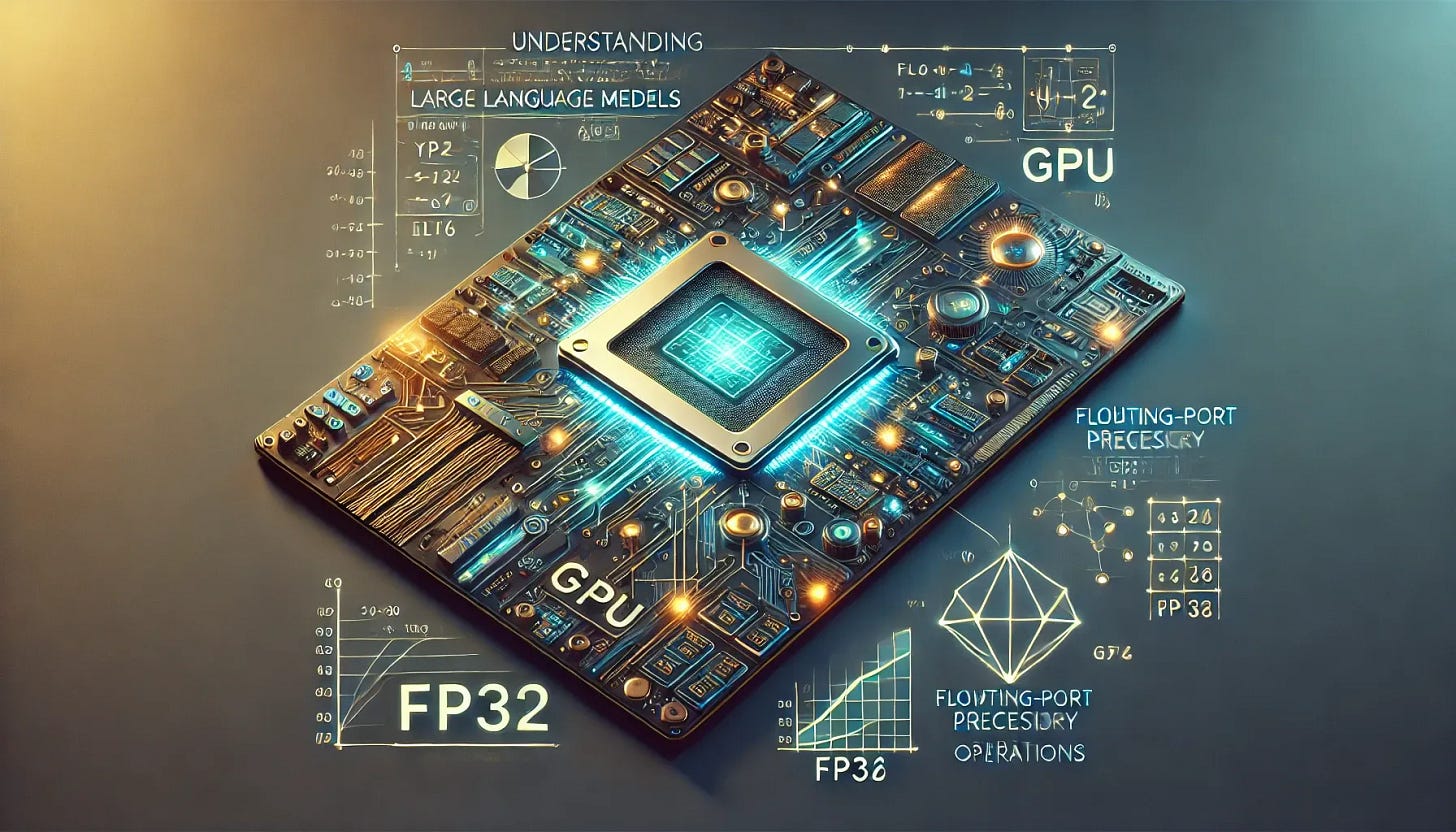Understanding GPU Components for LLMs

In the fast-evolving world of artificial intelligence, each new GPU release is met with a mix of excitement and scrutiny. Terms like cores, memory, and bandwidth are frequently discussed, but what do they mean for training and inferencing large language models? For anyone working in this space, understanding these GPU components is not just helpful—it’s essential. This blog unpacks why GPU specs matter and how they influence the performance and scalability of LLMs.
The Math Behind LLMs
Large Language Models are essentially sophisticated layers of mathematical operations, primarily centered around matrix multiplications. Let’s explore this in simple terms:
Matrix Multiplication Basics
Consider two matrices:
A (3x2): [[1, 2], [3, 4], [5, 6]]
B (2x3): [[7, 8, 9], [10, 11, 12]]
To calculate A×B
Just for the multiplication of 2 matrix above, below are the number of operations:
Multiplications: 18
Additions: 9
Total Operations: 27
This is straightforward math, but when scaled to LLMs, the matrices involved often contain billions of elements. The number of operations grows exponentially, making computational efficiency critical.
Quick note: while our example used integers for simplicity, LLMs rely on floating-point numbers for greater precision—a topic we’ll cover shortly.
Training and Inference Operations
According to the scaling laws for training LLMs, the total operations required can be approximated using:
Training Operations = 6 × N × D
Inference Operations = 2 × N
Where:
N: Number of model parameters
D: Number of tokens in the training dataset
The factor 6 accounts for forward and backward passes and optimization overhead.
For instance, training a LLaMA 7B model requires 1.26×10²² operations, while inference for the same model uses 2 × N, equating to 1.4×10¹⁰ operations. Imagine the computational demand for models with 70 billion or even 400 billion parameters!
Floating-Point Precision in LLMs
Floating-point numbers are indispensable in LLMs, offering the flexibility to represent extremely large or small values with fractional precision. Here’s a quick breakdown of the most common types of floating-point precisions:
PrecisionUsageAdvantagesDisadvantagesRelevance in LLMsFP32TrainingHigh precision and numerical stabilityHigh memory and computational costEssential for critical calculations like gradient updates.FP16Training & InferenceFaster computations, lower memory usageSusceptible to underflow/overflowWidely used in mixed-precision training.BF16Training & InferenceCombines FP32 range with lower precisionSlightly less precise than FP32Preferred for training due to stability and efficiency.INT8InferenceLow memory and latencyPotential accuracy lossIdeal for deploying LLMs on resource-constrained systems.INT4ExperimentalUltra-compressed, hardware efficientSignificant accuracy lossEmerging for deploying very large models.
Memory Usage
Each floating-point number consumes memory when loading a model.
FP32: 4 bytes (32 bits) per parameter.
FP16: 2 bytes (16 bits) per parameter.
BF16: 2 bytes (16 bits) per parameter.
INT8: 1 byte (8 bits) per parameter.
Here’s how memory usage scales with precision for a model like LLaMA 7B:
FP32: 7×10^9 × 4bytes = 28 GB
FP16/BF16: 7×10^9 × 2byte = 14 GB
INT8: 7×10^9 × 1byte = 7 GB
INT4: 7×10^9×0.5bytes = 3.5 GB
Note: Additional memory is consumed for optimizations like K-V caching, which will be explored in future posts.
Key GPU Components for LLMs
To meet the massive computational and storage requirements of LLMs, GPUs are designed with specialized components. Let’s break down their roles:
Tensor Cores
Optimized for matrix multiplications, Tensor Cores handle mixed-precision computations (e.g., FP16/FP32) with high throughput, drastically reducing training and inference time.
FLOPS (Floating Point Operations Per Second)
As the name suggests FLOPS is how many operations a GPU can perform per second and is a measure of the GPU's raw computational power. Higher FLOPS directly translate to faster training and inference, making them critical for LLM workloads.
Memory (VRAM) and Bandwidth
VRAM: Tells so how much capacity the GPU’s has to store large model parameters.
Bandwidth: Shows the speed of data transfer, critical during forward and backward passes.
NVLink and Interconnects
In multi-GPU setups, NVLink ensures efficient communication, a necessity for distributed training of large models.
Power and Thermal Efficiency
Every GPU operation consumes power. Efficient designs minimize cost and ensure thermal stability during intensive tasks.
Decoding GPU Tech Sheets
To illustrate, let’s consider the data sheet of an NVIDIA H200 GPU. Equipped with the knowledge of FLOPS, Tensor Cores, and memory bandwidth, you can now interpret what makes these GPUs optimal for AI workloads.
Closing Thoughts
GPUs are the backbone of modern AI, particularly for LLMs. Understanding key specifications like cores, FLOPS, memory, and bandwidth empowers developers to make informed choices, maximizing performance and scalability.
Whether you're training multi-billion parameter models or optimizing for real-time inference, the right GPU can unlock new possibilities in AI innovation. As the AI landscape evolves, staying informed about GPU advancements will keep you ahead in this exciting field.



